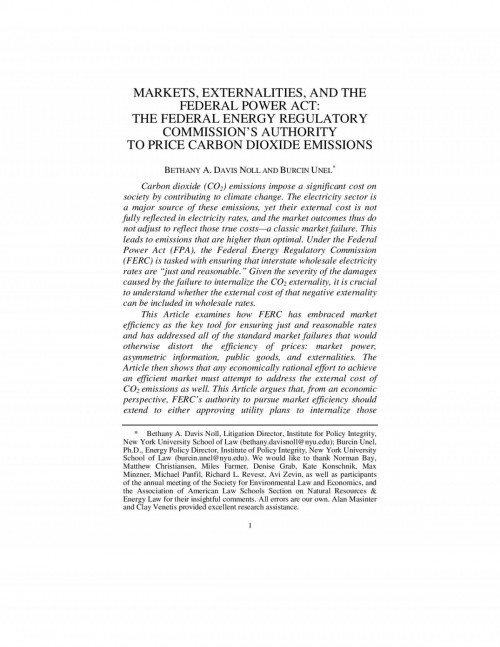This article, published in the New York University Environmental Law Journal, shows how the Federal Energy Regulatory Commission (FERC) must attempt to address the external cost of carbon dioxide (CO2) emissions to achieve an efficient electricity market. CO2 emissions impose a significant cost on society by contributing to climate change. The electricity sector is a major source of these emissions, yet their external cost is not fully reflected in electricity rates, and the market outcomes thus do not adjust to reflect those true costs—a classic market failure. This leads to emissions that are higher than optimal.
Under the Federal Power Act, FERC is tasked with ensuring that interstate wholesale electricity rates are “just and reasonable.” Given the severity of the damages caused by the failure to internalize the CO2 externality, it is crucial to understand whether the external cost of that negative externality can be included in wholesale rates. This article examines how FERC has embraced market efficiency as the key tool for ensuring just and reasonable rates and has addressed all of the standard market failures that would otherwise distort the efficiency of prices: market power, asymmetric information, public goods, and externalities. From an economic perspective, FERC’s authority to pursue market efficiency should extend to either approving utility plans to internalize those external costs or to set a carbon price, just as it extends to other market failures.

